
About F1
F1 race, also called Formula One or Grand Prix is an international auto racing sport. As its name implies, F1 is the pinnacle of formula racing, featuring the best drivers in the most powerful, technically advanced cars.
This sport is associated with the thrill and excitement of speed racing. This auto racing sport is governed and sanctioned by a world body called the FIA – Fédération Internationale de l’Automobile or the International Automobile Federation.
This sport has its roots from European Grand Prix championships of the 1920s and 1930s. The modern F1 began in 1946 when the Fédération Internationale de l’Automobile’s (FIA) standardized racing rules, which was followed by a World Championship of Drivers held in 1950.
Formula racing is, by definition, highly regulated. Specific rules — or formulas — define exactly how cars must be configured and exactly how a race must be conducted. F1 rules come in two distinct categories.
Sporting regulations cover all aspects of the race itself, from how a race is started to how it’s concluded and everything in between. Technical regulations provide specific details about the car’s major systems, including the engine, transmission and suspension.
For latest standings in F1 refer: FIA Site
Objective
F1 is a team event, though it may seem apparent that it is the driver who drives the racing car. The driver is an important member of the team, but there are many engineers and support staffs involved in this sporting event.
This sport is played according to a pre-determined schedule, spanning across multiple countries. The F1 season starts around the middle of March every year and ends around the last week of November.
Race events take places in race circuits specially designed for testing the driver’s control, ability and handling of the race car. These race circuits are also a test for the car’s endurance and manoeuvrability. Sometimes they are conducted on closed public roads as well.
The racing circuit has bends of different circumference as well as straight lines that tests both the cars straight-line speed and braking manoeuvres along with drivers skills.
The driver who crosses the finish line first after completing a pre-determined number of laps of a circuit is declared the winner of the race. Driver and teams are awarded certain points based on the position of the car after finishing each race.
At the end of the racing season, the driver who has acquired the maximum number of points accumulated throughout the racing year is declared as the Driver champion. Likewise, the team that has acquired the maximum number of points accumulated throughout the racing year is declared the Constructors champion.
Awareness
F1 is an expensive motorsport event that requires the most advanced technology for the car. So a lot of funds are invested in research and development of design, engine, fuel efficiency, braking etc.
The objective is to make the racing car lighter and smooth aerodynamically with an engine that can deliver the maximum thrust and can brake hard along with easy manoeuvrability.
The F1 race car is itself very expensive having thousands of parts. Logistics and moving these many parts along with the race car itself to distance places throughout the year along with the staff also bears a heavy cost.
Ten teams participate in the F1 World Championship with two cars each. A total of 20 cars enter the competition each year. Each F1 team can have a maximum of four drivers per season. There are also a team of engineers, mechanics, team director, the technical director usually called the support staff with every F1 team that plays a vital role in the team’s success.
The minimum standard distance for all races in a season year is 300 km or 190 miles. The total length of a race circuit is divided by this distance to calculate the number of laps the driver needs to complete to finish a race.
The only exception being the race at Monaco which is 260 km or 160 miles. The race at Monaco is considered to be the toughest race that has many hairpin bends and a tunnel that takes a huge effort from the drivers.
The Race Car
The F1 car is an open-cockpit, single-seat racing car built specifically for racing in F1 competitions. The engine is located behind the driver and the chassis has two wings one at the front and other at the rear. The F1 race car consists of three most important components – the chassis, the engine and the tyres that take the brunt of pondering.
F1 car’s width can be up to 200 cm and height up to 95cm. The weight should be greater than 743 kg including driver and tyres. The driver and his kit must weigh a minimum of 80 kilos. In case the driver and their kit weigh less, their cars must take ballast, which must be fitted in the cockpit area only to overcome the weight deficit.
Engine of F1 car must have a 1.6 litre turbocharged V6.
Gearbox is semi-automatic sequential which is electronically controlled with rapid selection usually made up of carbon titanium having 8 forward gears and 1 reverse gear, with rear-wheel drive.
Steering wheel of an F1 car is equipped with a lot of electronic switches by which drivers can change gears; change the brake pressures, calling on the radio. Some steering wheels also have the circuits design to help the drivers to check which part of the circuit they are driving.
Tyres are made by a third party like Pirelli, Michelin or Dunlop according to the specification of FIA. The manufactures use these tyres as decided by FIA. The front tyres are 305mm wide and the rear tyres are 405 mm wide. Each tyre is marked based on the composition as white-marked for hard tyre type, yellow-marked for medium tyre type and red – marked for soft tyre type.
Brakes used are carbon disc brakes for both front and rear wheels with electronic control system on rear brakes.
Front wing is one of the most important components of the F1 car, it produces downforce at the front end. Moreover, it also manoeuvres the airflow over the rear, which is a key factor in delivering effective aerodynamics.
Brake ducts are also very crucial component; they are designed as such to cool the carbon disc brakes that can reach temperatures of over a thousand degrees Celsius during consistent braking.
Rear wing is about 870mm in height and about 1050mm wide. This larger wing creates more drag and the rules now allow for a larger opening to be created between the rear wing flap and main plane when DRS is engaged. This means that the loss in drag and boost in speed will be more marked than with the current wing.
Bargeboards are the side-mounted vanes that provide direct airflow to some specific areas of the F1 car. The maximum height of bargeboards is 350 mm above the reference plane.
Taillights that are LED lights are fitted behind the rear wing endplates. This allows drivers to get a clearer view of the car ahead in poor conditions.
F1 cars are made for speed, and they can accelerate from 0 to 100 mph (160 kmph) in under 5 seconds. They regularly can attain speeds more than 310 kmph on a straight road.
Safety
F1 is high-speed motorsport, hence safety of drivers and spectators are of utmost priority. FIA has its official safety regulations and any violations are penalized heavily. This sport has seen many casualties due to the lack of enhanced safety measures.
Ayrton Senna former F1 world championships for McLaren in 1988, 1990 and 1991, and who is widely regarded as one of the greatest F1 drivers of all time died in an accident while leading the 1994 San Marino Grand Prix for Williams.
On 5 October 2014, 25-year-old Marusia driver Jules Bianchi suffered a severe head injury during Sunday’s Japanese GP and later succumbed to his injury.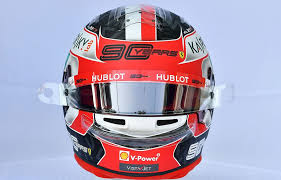
Crash Helmets: Head and neck injuries remains the greatest single injury risk to drivers. A driver’s head is subjected to extreme G-forces experienced during accelerating and braking with a high-speed car. Crash helmets are compulsory in F1 racing since 1953.
A modern F1 helmet is very light weighing around 1.3 kilos and are very strong. The stronger the helmet, the greater is its ability to absorb impacts and resist penetration during a crash.
They are mainly made up of carbon fibre, polyethylene and fire-resistant aramide, and are constructed in several layers. The helmet’s visor is also made up of fire-resistant polycarbonate providing excellent visibility.
Drivers use tinted visors that are coated with anti-fogging chemicals that prevent the accumulation of mist during rain. Several transparent strips are attached outside the visor that drivers can peel off to clear their vision to remove the dirt accumulating in the visor during the race.
Adequate and filtered ventilation is also provided in the helmet for breathing. The helmets are aerodynamically designed to minimise drag.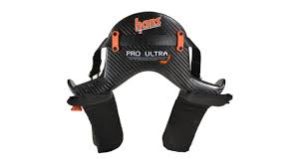 HANS: To keep the car’s centre of gravity as low as possible, the bottom of the seat is on the floor of the chassis, just inches above the ground. In the event of an accident, Head and Neck Support (HANS) is intended to prevent stretching of the vertebrae and to prevent the driver’s head from colliding against the steering wheel.
HANS: To keep the car’s centre of gravity as low as possible, the bottom of the seat is on the floor of the chassis, just inches above the ground. In the event of an accident, Head and Neck Support (HANS) is intended to prevent stretching of the vertebrae and to prevent the driver’s head from colliding against the steering wheel.
HANS consists of a shoulder collar made up of carbon fibre that is attached to the shoulder of the driver. HANS has been made compulsory since 2003.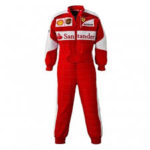 Clothing: Driver suit is made up of fire-resistant, a lightweight artificial fibre called Nomex. It can withstand a temperature of 840 degrees Celsius for 11 seconds. These suits are also worn by pit crews. Under the helmet drivers wear a balaclava made of the same material.
Clothing: Driver suit is made up of fire-resistant, a lightweight artificial fibre called Nomex. It can withstand a temperature of 840 degrees Celsius for 11 seconds. These suits are also worn by pit crews. Under the helmet drivers wear a balaclava made of the same material.
Under the suit, the driver also wears flameproof underwear. Ankle boots are made of soft, cushioned leather is also fire-resistant; the gloves are also fire-resistant and made up of the same artificial fibre. The driver must wear a biometric glove during driving.
F1 car must be fitted with an FIA accident data recorder during each Event and during all tests which are attended by more than one team.
About the Race
F1 race takes place according to a pre-determined schedule, over a weekend. It takes place through a period of 3 days Friday, Saturday and Sunday.
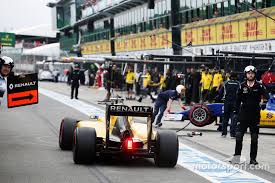 Pits Selection: Generally the winning constructor from the previous year picks which end of pit lane they want, at some tracks driver can get an advantage by being last in pit lane but most of the time driver gains the advantage from being first and so that they don’t have another team in the way when driving into the pit box, and all the remaining teams are ordered from them based on the previous year’s Constructors results.
Pits Selection: Generally the winning constructor from the previous year picks which end of pit lane they want, at some tracks driver can get an advantage by being last in pit lane but most of the time driver gains the advantage from being first and so that they don’t have another team in the way when driving into the pit box, and all the remaining teams are ordered from them based on the previous year’s Constructors results.
On Friday before every F1 Grand Prix (except Monaco), there are two 90-minute practice sessions. Monaco has them on Thursdays. Teams use them to work on setups and strategy choices for the coming weekend, while the drivers get an opportunity to learn or re-familiarize themselves with the circuit.
On Saturday, begins with the 3rd practice session in the morning, the duration of this session is one hour. Saturday afternoon the teams have a one-hour qualifying session divided into three parts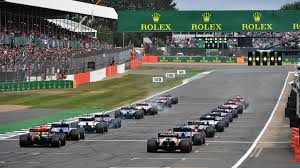
Q1: During qualifying session 1, all the participating cars try to set the fastest time. The five slowest cars are eliminated, earning the bottom grid positions.
Drivers are allowed to complete as many laps as they want during this short space of time that lasts 18 minutes. They are positioned 16, 17, 18, 19 and 20 on the starting grid based on their fastest timings.
Q2: This session lasts 15 min after a brief period of the interval, where the remaining 15 cars participate and try to set the fastest time. The five slowest cars are eliminated. They are positioned 11, 12, 13, 14 and 15 on the starting grid based on their fastest timings.
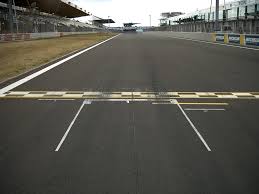 Q3: The duration of this session if of 12 min and the remaining 10 cars participate in this session. The final grid standing of these 10 cars is based on the fastest timings set in this session. The driver finishing the fastest amongst them all is awarded the pole position, which is the first position of the grid.
Q3: The duration of this session if of 12 min and the remaining 10 cars participate in this session. The final grid standing of these 10 cars is based on the fastest timings set in this session. The driver finishing the fastest amongst them all is awarded the pole position, which is the first position of the grid.
Race: F1 race takes place on Sunday afternoon. The race starts with a warm-up lap, drivers drive the car along the race track in slow speed to ensure that track conditions are safe and handling of the car. This lap is also used to build up tyre temperatures.
Once all the cars have taken their positions on the grid with their engines running, the race begins with the five pairs of lights turning green one after another after 1 sec each. When all five pairs of lights turn green the race begins.
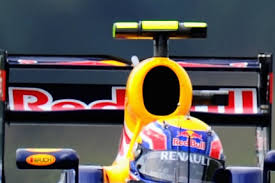 DRS: F1 car needs downforce to keep the cars on the track in the corners. When cars accelerate through the straight line, the additional speed creates much more downforce than required.
DRS: F1 car needs downforce to keep the cars on the track in the corners. When cars accelerate through the straight line, the additional speed creates much more downforce than required.
DRS (“Drag Reduction System”), enables a car to open its rear wing to control the downforces on the car. This increases performance and helps in passing. This system is activated by the driver through a button on the steering wheel. During the race, DRS can only be used in designated Activation Zones.
Some Rules Of The Race
- All drivers, competitors and officials participating in the Championship must hold an FIA Super License.
- An event may be cancelled if fewer than 12 cars are available for it.
- The promoter of an Event must procure that all competitors, their personnel and drivers are covered by third party insurance following the FIA requirements.
- The stewards may inflict the penalties specifically set out in these Sporting Regulations in addition to or instead of any other penalties available to them under the Code.
- Any driver who receives three reprimands in the same Championship season, upon the imposition of the third, is given a ten grid place penalty at that Event.
- One hour and 40 minutes before the scheduled start of the formation lap all drivers must attend a drivers’ parade.
- All drivers must be present at the front of the grid for the playing of the national anthem 16 minutes before the scheduled start of the formation lap.
- If a car stops on the track it shall be the duty of the marshals to remove it as quickly as possible so that its presence does not constitute a danger or hinder other competitors.
- A driver who abandons a car must leave it in neutral or with the clutch disengaged, with the ERS shut down and with the steering wheel in place.
- A speed limit of 80km/h is imposed in the pit lane during the whole Event. Stewards may inflict an additional penalty if they suspect a driver was speeding to gain any sort of advantage.
- Each competitor may have no more than two cars available for use at any one time during an Event. During a season each team is permitted to use four drivers. The driver must drive the car alone and unaided
- At no time may a car be driven unnecessarily slowly, erratically or in a manner which could be deemed potentially dangerous to other drivers or any other person.
- The section of track between the first safety car line and the beginning of the pit lane is designated as the “pit entry”. The section of track between the end of the pit lane and the second safety car line is designated as the “pit exit”. At no time may a car be reversed in the pit lane under its power.
- Team personnel are only allowed in the pit lane immediately before they are required to work on a car and must withdraw as soon as the work is complete.
- Cars must not be released from a garage or pit stop position in a way that could endanger pit lane personnel or another driver.
- If a car is deemed to have been released in an unsafe condition during any practice session, the stewards may drop the driver with some grid positions as they consider appropriate. Under exceptional circumstances, the race director may ask for the pit entry to be closed during the race for safety reasons.
- No car is permitted to consume more than 110kg of fuel, from the time at which the signal to start the race is given to the time each car crosses the Line after the end-of-race signal has been given.
- Unless the track was declared wet by the race director, any driver eliminated during Q1 whose best qualifying lap exceeds 107% of the fastest time set during that session, or who fails to set a time, is not allowed to take part in the race.
- Under exceptional circumstances, however, which may include setting a suitable lap time in a free practice session, the stewards may permit the car to start the race.
- If two or more drivers set identical times during Q1, Q2 or Q3 priority is given to the one who set it first.
- The starting grid is published no less than four hours before the start of the formation lap. Any competitor whose car(s) is (are) unable to start for any reason whatsoever (or who has good reason to believe that their car is not ready to start) must inform the stewards accordingly at the earliest opportunity and, in any event, no later than one hour and fifteen minutes before the start of the formation lap.
- If one or more cars are withdrawn from the starting grid is closed up accordingly. The final starting grid is published one hour before the start of the formation lap.
- 30 minutes before the scheduled start of the formation lap the end of the pit lane is closed and a second warning signal is given. Any car which is still in the pit lane can start from the end of the pit lane provided it got there under its power.
- Overtaking during the formation lap is only permitted if a car is delayed and cars behind cannot avoid passing it without unduly delaying the remainder of the field. In this case, drivers may only overtake to re-establish the original starting order.
- If a car develops a problem that could endanger the start the driver must immediately raise his hands above his head and the marshal responsible for that row must immediately wave a yellow flag.
- If the race director decides the start should be aborted the green lights are illuminated two seconds after the abort lights are switched on, a board saying “EXTRA FORMATION LAP” is displayed and all cars able to do so must complete a further formation lap whilst the car which developed the problem is moved into the pit lane. The team may then attempt to rectify the problem and, if successful, the car may then start from the end of the pit lane. Every time this happens the race is shortened by one lap.
- If the race has could not be started under some circumstances, the abort lights are switched on, a board saying “DELAYED START” is displayed, engines should be stopped and all teams are informed of the likely delay. Tyre changing on the grid is not permitted during such a delay.
- If, after the start, a car is immobilised on the starting grid, it shall be the duty of the marshals to push it into the pit lane by the fastest route.
- If it starts to rain after the five-minute signal but before the race is started and, in the opinion of the race director teams should be allowed to change tyres, the abort lights are shown on the Line and the starting procedure begins again at the ten-minute point.
- During the race, drivers leaving the pit lane may only do so when the light at the end of the pit lane is green. A marshal with a blue flag and/or a flashing blue light also warns the driver if cars are approaching on the track.
- It shall be at the discretion of the stewards to decide if any driver involved in an Incident should be penalised. Unless it is clear to the stewards that a driver was wholly or predominantly to blame for an Incident no penalty is imposed. The stewards may impose any one of the penalties below on any driver involved in an Incident:
- A five-second time penalty. The driver must enter the pit lane, stop in his pit stop position for at least five seconds and then re-join the race.
- A ten second time penalty. The driver must enter the pit lane, stop in his pit stop position for at least ten seconds and then re-join the race.
- A drive-through penalty. The driver must enter the pit lane and re-join the race without stopping.
- A ten-second stop-and-go time penalty. The driver must enter the pit lane, stop in his pit stop position for at least ten seconds and then re-join the race.
- If competitors or officials are placed in immediate physical danger by cars running on the track, and the clerk of the course deems circumstances are such that the track cannot be negotiated safely, even behind the safety car, the race is suspended.
- Even if after several laps behind the safety car, track conditions are considered unsuitable to start the race from a standing start, the message “ROLLING START” is sent to all teams. At this point the first car in line behind the safety car may dictate the pace and, if necessary, fall more than ten car lengths behind it.
- A chequered light panel signals the end-of-race signal and is shown at the finishing line as soon as the leading car has covered the full race distance.
Race Officials
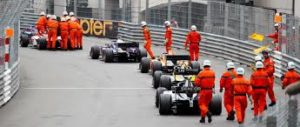 F1 event is supervised by six delegates nominated by FIA for each race they are:
F1 event is supervised by six delegates nominated by FIA for each race they are:- Safety delegate.
- Medical delegate.
- Technical delegate.
- Press delegate.
- A representative of the President of the FIA.
- An observer.
- A safety car driver.
- A medical car driver.
The following FIA officials who are holders of an FIA Super License are also present at the race
- Three stewards one of whom is appointed chairman.
- A race director.
- A permanent starter.
- The clerk of the course.
Safety Car
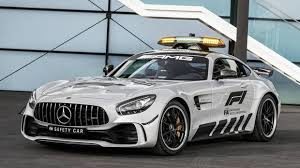
The F1 safety car is driven by an FIA appointed driver and carries an FIA observer capable of recognising all the competing cars who is in permanent radio contact with race control.
Fifty minutes before the start of the formation lap the safety car leaves the pit lane and take up the position at the front of the grid and remain there until the five-minute signal is given, during which it covers a whole lap of the circuit and take up the position.
The safety car may be brought into operation to neutralise a race upon the order of the clerk of the course in consultation with the race director. It is used only if competitors or officials are in immediate physical danger on or near the track but the circumstances are not such as to necessitate suspending the race.
FIA light panels’ displays “SC” and all marshal’s posts displays waved yellow flags and “SC” boards for the duration of the intervention. No car may be driven unnecessarily slowly, erratically or in a manner which could be deemed potentially dangerous to other drivers or any other person at any time whilst the safety car is deployed.
This applies whether any such car is being driven on the track, the pit entry or the pit lane. The safety car joins the track with its orange lights illuminated and does so regardless of where the race leader is.
Each competing cars must reduce speed and form up in line behind the safety car no more than ten car lengths apart. To ensure that drivers reduce speed sufficiently. Cars are not normally allowed to pass the safety car or other competitors during a caution period, and the safety car leads the field at a pre-determined safe speed.
The safety car has been supplied by Mercedes-Benz. It is a 577-horsepower AMG GT R machine. It is equipped with radio systems, fully integrated iPads and WLAN hotspots to ensure constant contact with race control throughout a Grand Prix weekend.
Driven by Bernd Maylander a former successful touring-car racer. He maintains the pace during the safety period just high enough so that the F1 cars’ tyres and brakes do not cool down too much.
Racing Flags
Flags play an important role in visually communicating messages quickly and efficiently to the race drivers. Although the radio could theoretically perform the same task, flags are much easier to use to communicate these certain universal messages to the drivers like the race start or finish, lap indication, bad weather indication, etc.
Race Marshal raises the flags to alert the driver of the upcoming dangers so that they can take proper action. Though some race tracks employ lights to supplement the flags, they have remained constant since the early years of racing.![]() Checkered Flag: A checkered flag is waved indicating the end of a race. The race leader is shown the checkered flag at the end of the race. The checkered flag is also waved at the end of the allotted time during practice and qualifying sessions which indicates the end of the session.
Checkered Flag: A checkered flag is waved indicating the end of a race. The race leader is shown the checkered flag at the end of the race. The checkered flag is also waved at the end of the allotted time during practice and qualifying sessions which indicates the end of the session.![]() Yellow Flag: This flag warns drivers to slow down due to some obstacles on the track. During the yellow flag period, overtaking is prohibited.
Yellow Flag: This flag warns drivers to slow down due to some obstacles on the track. During the yellow flag period, overtaking is prohibited.![]() Green Flag: This flag gives an all-clear signal to the driver and continues with racing. It also indicates that the potential danger has been removed.
Green Flag: This flag gives an all-clear signal to the driver and continues with racing. It also indicates that the potential danger has been removed.![]() Red Flag: The race or the session is being stopped due to some accident or poor track conditions.
Red Flag: The race or the session is being stopped due to some accident or poor track conditions.![]() Blue Flag: This flag is an indication that the driver is about to be lapped by a faster car which is ahead of cars current position. Driver must allow the faster car to overtake him. Overlooking 3 blue flags, driver risks to be penalized.
Blue Flag: This flag is an indication that the driver is about to be lapped by a faster car which is ahead of cars current position. Driver must allow the faster car to overtake him. Overlooking 3 blue flags, driver risks to be penalized.![]() Yellow And Red Striped Flag: The track surface is slippery due to oil spill or water.
Yellow And Red Striped Flag: The track surface is slippery due to oil spill or water.![]() Black With Orange Circle Flag: This flag warns a driver that he has a mechanical problem and must return to his pit. This flag is rarely shown these days the message is directly communicated to the driver through radio.
Black With Orange Circle Flag: This flag warns a driver that he has a mechanical problem and must return to his pit. This flag is rarely shown these days the message is directly communicated to the driver through radio.![]() Black Flag: This flag is used as a signal to the driver that he has been excluded from the race, and that the driver should immediately return to his pit.
Black Flag: This flag is used as a signal to the driver that he has been excluded from the race, and that the driver should immediately return to his pit.![]() Half Black And Half White Flag: This flag warns the driver of unsporting behaviour.
Half Black And Half White Flag: This flag warns the driver of unsporting behaviour.![]() White Flag: Warns racing drivers of a slow-moving car on track which can be ambulance or firefighters.
White Flag: Warns racing drivers of a slow-moving car on track which can be ambulance or firefighters.
Race Points
- 25 Points.
- 18 Points.
- 15 Points.
- 12 Points.
- 10 Points.
- 8 Points.
- 6 Points.
- 4 Points.
- 2 Points.
- Fastest Lap Point: 1 Point.
Some Race Circuits
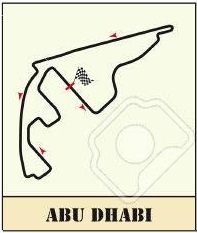

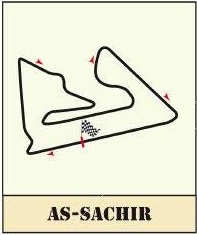


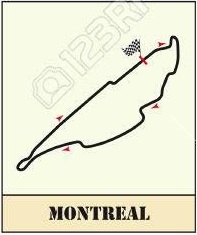
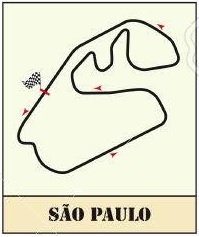
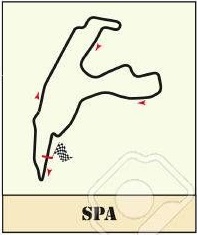

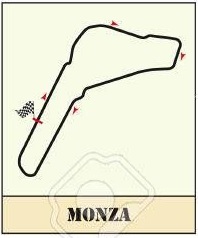
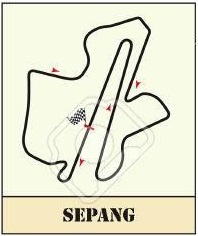
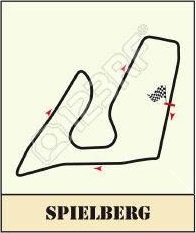
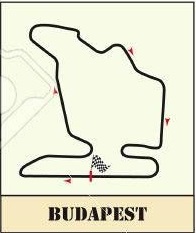
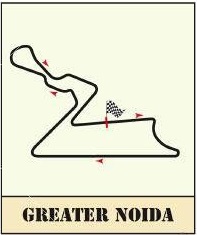

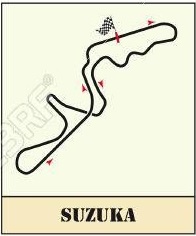

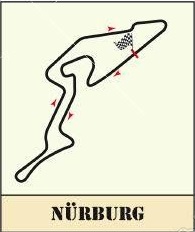
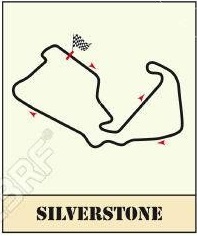
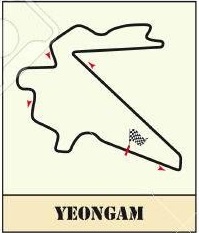




 (2 votes, average: 5.00 out of 5)
(2 votes, average: 5.00 out of 5)


